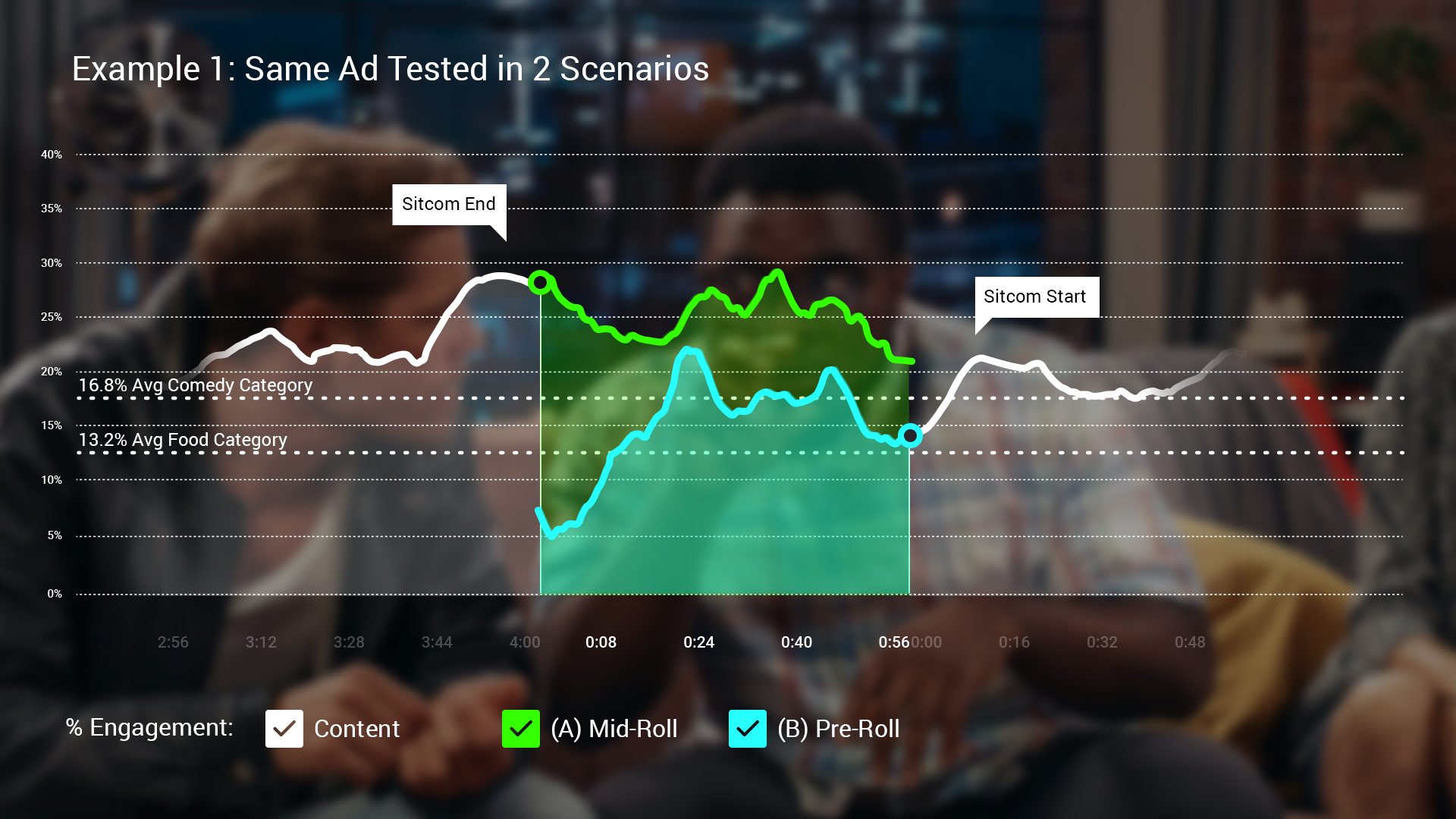
How a Strong Content Lead-In Increased Engagement by 62%

Colin Pye
For as long as there’s been advertising, marketers have sought to place their messaging next to the most resonant content. The reasoning is simple – the adjacency of an ad to well-received content can amplify a brand’s message to solidify its relationship with the target audience.
However, “cutting to commercial” can be at risk of disrupting the viewing experience, causing a negative effect on how well an ad is received.
Our report: ‘Attention Metrics for Better Ad Placement in Streaming Video, CTV’, found that creating a harmony between content and advertisement yields greater impact on ad effectiveness.
The ability to quantify audience attention and reactions to both content and ads enables advertisers to drive viewer engagement by selecting the best media placement or choosing the best ad to suit the slot.
Key Takeaways
- An ad following popular content had a ‘spill-over effect’ of Engagement 32.8% Mid-Roll vs 9.2% Pre-Roll
- Entire 60-second duration of the ad attributed 62% lift to overall engagement (26.6% vs 16.4%).
- Selecting 1 out of 3 ad options, the ad which matched the tone of the adjacent content garnered high attention (77%), highest Engagement (29% vs 22%), and double positive reactions (24% vs 12%).
Considering that creative is the most important determinant for campaign success, with an estimated effect of anywhere from 45% to 60%, finding the right “lead-in” environment for a company’s advertising is a highly consequential undertaking.
As attention and emotion measurement moves from the research lab to the real world, we can begin to quantify the value of powerful content and its subsequent impact on ad-adjacency.

Let’s look at viewer Engagement when watching a clip from one of the most popular sitcoms over the past decade. Overall, the sitcom clip attracted an Avg Engagement level of 21.6%, well above the category norm. More impressively, before “going to commercial,” the segment’s final Engagement peaked at a lofty 28.1%.
To illustrate the lift that ads can garner when coupled with stimulating content, we tested the same Food Category ad in two different viewing scenarios. In scenario A, the ad was displayed after the sitcom clip (Mid-Roll). Whereas scenario B, the ad was displayed before the show clip (Pre-Roll).
By priming viewers with stimulating content, the Mid-Roll spot not only opened with much higher starting Engagement than the Pre-Roll spot (32.8% vs 9.2%), maintaining a distinct advantage in Avg Engagement over the entire 60-second duration (26.6% vs 16.4%). The result - a strong lead-in had a ‘spill-over effect’ which attributed to 62% lift to overall engagement.